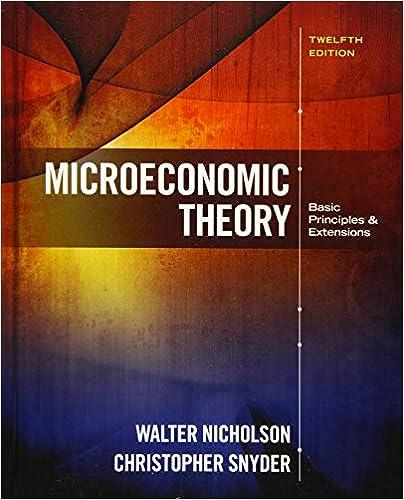An individual has a fixed wealth (W) to allocate between consumption in two periods (c1 and c2).
Question:
An individual has a fixed wealth (W) to allocate between consumption in two periods (c1 and c2). The individual’s utility function is given by U 1c1, c22, and the budget constraint is W 5 c1 1 c2 1 1 r
, where r is the one-period interest rate.
a. Show that, in order to maximize utility given this budget constraint, the individual should choose c1 and c2 such that the MRS (of c1 for c2) is equal to 1 1 r.
b. Show that ∂c2/∂r $ 0 but that the sign of ∂c1/∂r is ambiguous. If ∂c1/∂r is negative, what can you conclude about the price elasticity of demand for c2?
c. How would your conclusions from part
(b) be amended if the individual received income in each period (y1 and y2) such that the budget constraint is given by y1 2 c1 1 y2 2 c2 1 1 r 5 0?
Step by Step Answer:

Microeconomic Theory Basic Principles And Extensions
ISBN: 9781305505797
12th Edition
Authors: Walter Nicholson, Christopher M. Snyder






